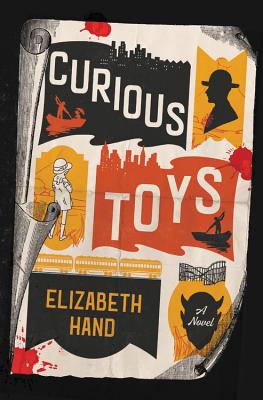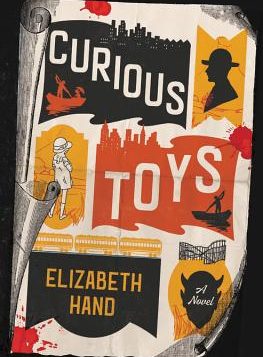 CURIOUS TOYS
CURIOUS TOYS
by Elizabeth Hand
Little Brown. 373 pages, $27.
IT’S THE SUMMER OF 1915, and fourteen-year old Pin Maffucci is living inside Chicago’s Riverview amusement park with her mother, who works there as a fortune-teller and dance hall instructor. Pin’s younger sister has recently vanished, and to protect Pin from sexual predators her mother encourages her to dress like a boy.
Pin’s mother doesn’t have to force her, though. Pin enjoys the freedom her new identity brings, which includes a job delivering drugs for Max, an opium dealer who performs as the “Half Man, Half Woman” in the freak show.
Hand populates Curious Toys with a rich cast of possible suspects including Max, who is violent and threatening when not on stage, and Lionel, a secretive screenwriter whose scripts involve gruesomely murdered women. Or maybe the killer is Francis “Fatty” Bacon, a member of Riverview’s security force who keeps hovering around Pin’s mother. The Chicago police think it’s Lord Floyd, the black stage magician who moonlights as the Devil in the Hellgate ride. Pin, on the other hand, thinks it might be Henry Darger, a strange little man who seems inordinately attracted to young girls.

Many readers will recognize Henry Darger as the famous mentally ill outsider artist whose 15,000-page illustrated magnum opus, The Story of the Vivian Girls, in What Is Known as the Realms of the Unreal, of the Glandeco-Angelinian War Storm, Caused by the Child Slave Rebellion, deals heavily with the torture and death of female children and was only discovered after his death in 1973. Darger is only one of several historical figures that appear in Hand’s novel, which was thoroughly researched. The result is that Riverview and the surrounding neighborhoods become vividly real. The sheer amount of historical detail could threaten to bog down the plot, but Hand manages to keep Curious Toys moving along by focusing on Pin’s investigation into the murder and her journey into self-awareness as a queer person.
Hand’s first novel, 1990’s Winterlong, a tale of young prostitutes in a baroquely post-apocalyptic Washington D.C., laid out the themes that she’s explored in eighteen books since then: gender, sexuality, and the importance of art. Feminist witches battle the patriarchy with deadly results in Waking the Moon (1995), while an ageless artist’s muse destroys those she inspires in Mortal Love (2004). Hand’s recent “Cass Neary” series of mystery novels feature a bisexual protagonist with a shady past who keeps stumbling into murders on the seedy side of the art world.
Similar themes appear in Curious Toys, although without the fantasy or horror elements of her other novels. Here Hand explores the production of early 20th-century mass entertainment and how women and girls were fodder for that industry. An interchangeable and expendable group of underage actresses is routinely molested by male stars at the movie studio, while prostitutes and female dancers who dress like children’s dolls are among the amusement park’s attractions. Several characters own cheaply printed pornography showing women being tortured, and Darger made his art from pictures of girls he found in magazines and newspapers.
The same mass culture that degrades young women, though, also teaches Pin about Harriet Quimby, the first American woman to get her pilot’s license, which led her to become a Hollywood celebrity. And while Riverview is exploitative and dangerous, its large crowds allow Pin the anonymity to be whoever she wants. Curious Toys can be grim, filled as it is with incinerated corpses, poisoned candy, and filthy slums, but it also contains some hope, particularly for Pin. The final few chapters made me a little teary-eyed, and I realized that this novel, which is ostensibly a historical crime thriller, is really about something else entirely.
Peter Muise, who writes about New England folklore and legends, is the author ofLegends and Lore of the North Shore.






